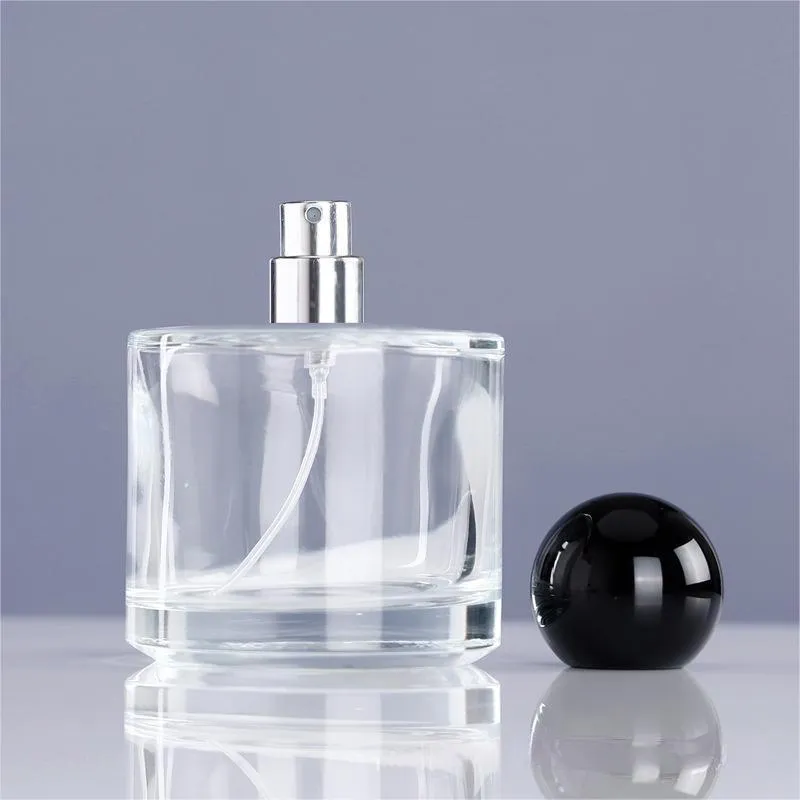In the competitive fragrance industry, ensuring that a perfume bottle is perfectly sealed is essential. Air leaks in perfume bottle cap and neck design can lead to several issues, such as fragrance evaporation, reduced product longevity, and consumer dissatisfaction. To maintain the quality of the fragrance and protect brand integrity, perfume manufacturers must address and solve air leak issues. This blog post will provide a comprehensive guide to understanding the causes of air leaks, practical solutions for fixing them, and best practices for preventing leaks in future designs.

Table of Contents
1. Understanding the Causes of Air Leaks in Perfume Bottles
Anatomy of a Perfume Bottle: Cap and Neck
The design of a perfume bottle’s cap and neck is crucial to ensuring a secure seal that prevents air leaks. The neck of the bottle is the part that holds the spray mechanism, while the cap serves as a cover that protects the fragrance from exposure to air.
Key components:
- Neck: Supports the spray nozzle and plays a vital role in ensuring that the bottle is sealed tightly.
- Cap: Should fit precisely over the neck, creating an airtight closure. Caps may include gaskets or liners to improve sealing.
When these components are not designed or manufactured properly, they can fail to create a complete seal, leading to air leaks.
Factors Contributing to Air Leaks
Several factors contribute to air leaks in perfume bottles, which can ultimately affect the fragrance’s quality and shelf life:
- Inconsistent Manufacturing Tolerances: Variations in the bottle neck’s dimensions during production can lead to improper sealing.
- Misaligned Caps: Caps that are not aligned correctly on the neck fail to create an airtight seal.
- Poor Sealing Mechanisms: Inferior liners or gaskets can lead to air leakage, even when the cap appears to fit snugly.
- Low-Quality Materials: Caps made from cheap materials may shrink, crack, or deform over time, compromising the seal.
Addressing these causes requires a deep understanding of the design and production process to ensure consistency and quality.
Common Signs of Air Leaks
If a perfume bottle experiences air leaks, there are clear signs that manufacturers and consumers should look out for:
- Fragrance Loss: A weaker scent over time is a strong indicator of air exposure.
- Visible Evaporation: If the liquid level inside the bottle drops without use, an air leak is likely.
- Seepage: Leakage around the cap or neck area, resulting in moisture or residue on the bottle’s surface.
Detecting these issues early can prevent a poor consumer experience and reduce product returns.
2. Solutions for Solving Air Leak Issues in Perfume Bottle Cap and Neck Design
Importance of Precision in Bottle and Cap Manufacturing
Ensuring that precision is maintained during the manufacturing of both the bottle and cap is one of the most effective solutions for preventing air leaks. Key factors include:
- Advanced Molding Techniques: High-precision molding processes are necessary to avoid inconsistencies in bottle neck dimensions.
- Tight Tolerances: Ensuring tight tolerances during production minimizes the likelihood of dimensional variation that can lead to air leaks.
Investing in advanced machinery and strict production protocols can prevent many of the issues that arise from inconsistent bottle and cap production.

Improving Sealing Mechanisms
One of the most critical aspects of solving air leak issues is to improve the sealing mechanisms of the cap and neck. There are several ways to achieve this:
- Use of High-Quality Liners or Gaskets: These components form an additional barrier between the cap and neck to ensure an airtight seal.
- Foam Liners: Common in perfume bottles, foam liners compress when the cap is tightened, forming a seal.
- Rubber Gaskets: Offer durability and flexibility, ideal for preventing leaks in high-end fragrances.
- Innovations in Sealing Technology: Snap-on caps with integrated sealing mechanisms are becoming increasingly popular for their ability to maintain airtightness without the need for additional liners.

Material Considerations for Air-Tight Designs
The choice of materials plays a crucial role in preventing air leaks. Perfume bottles and caps are typically made from glass, plastic, or metal, each with its own set of benefits and challenges:
- Glass: Often preferred for luxury bottles due to its aesthetic appeal but requires precision in neck molding.
- Aluminum or Plastic Caps: Provide lightweight and flexible sealing options but may require additional lining for an airtight seal.
Choosing the right combination of materials for both the cap and neck is key to preventing air leaks.

Testing for Airtightness
Once the design and materials are optimized, thorough testing for airtightness is essential. Common testing methods include:
- Vacuum Testing: Detects air leaks by subjecting the bottle to a vacuum and measuring pressure changes.
- Pressure Decay Testing: Involves pressurizing the bottle and monitoring for any decay in pressure over time.
Manufacturers should implement these tests regularly to ensure that air leaks are identified and resolved before the bottles reach the market.
3. Best Practices for Ensuring Airtight Perfume Bottles
Regular Quality Control in Production
Implementing strict quality control measures at every stage of production can help prevent air leaks. Key practices include:
- Random Batch Testing: Regular testing of batches to detect manufacturing defects.
- In-Line Inspections: Automated checks during production to catch defects early.
These practices ensure that issues are addressed before they become widespread problems.
Partnering with Experienced Bottle Manufacturers
Working with experienced manufacturers that specialize in airtight design is crucial to achieving the best results. Case studies have shown that brands working with high-quality manufacturers experience:
- Fewer Returns: Due to fewer air leak issues.
- Higher Consumer Satisfaction: Leading to better brand loyalty.
Choosing the right partner can make a significant difference in the quality of your perfume bottles.
Ongoing Monitoring and Post-Production Checks
Even after production, it’s essential to monitor perfume bottles for air leak issues. Post-production checks such as shelf-life testing help identify long-term air leaks that may develop over time. Collecting consumer feedback also provides valuable insight into potential problems that were not detected during production.
4.The Future of Airtight Perfume Bottle Design
Innovations in Cap and Neck Technology
The future of airtight perfume bottle design lies in new materials and technologies that enhance sealing while maintaining design flexibility. Innovations like smart bottles with built-in leak detection mechanisms or self-sealing caps may revolutionize the industry in the coming years.
Reducing Environmental Impact While Ensuring Airtightness
As sustainability becomes more important, the challenge for manufacturers is to balance airtightness with eco-friendly materials. Biodegradable and recyclable materials that still provide a strong seal are becoming more prevalent. By focusing on sustainable airtight designs, manufacturers can meet the growing demand for environmentally conscious products without compromising on quality.
Conclusion
Solving air leak issues in perfume bottle cap and neck design is a complex process that requires attention to detail at every stage of production. From ensuring precision in manufacturing to using high-quality materials and advanced testing methods, manufacturers must implement best practices to deliver airtight perfume bottles. By following the guidelines outlined in this post, companies can enhance product longevity, reduce returns, and maintain consumer satisfaction, ensuring their fragrances stand the test of time.



